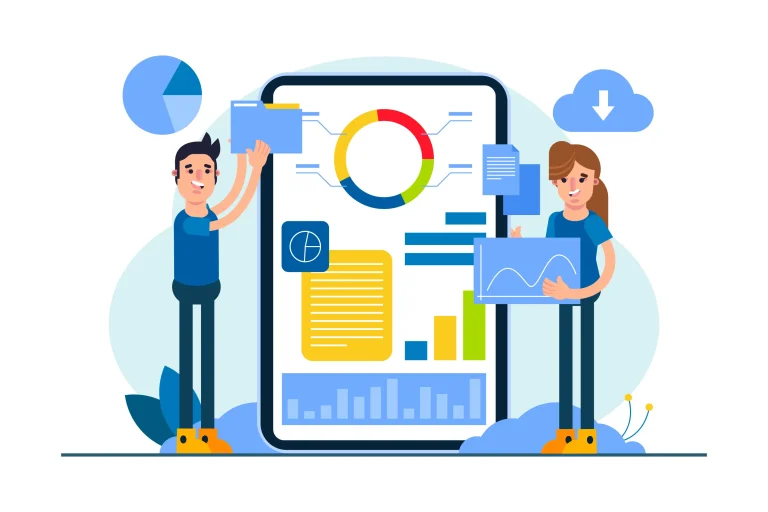Transform Your Monthly Reporting with Real-Time Business Intelligence Tools

Introduction
In a world where business decisions can’t wait until the end of the month, traditional reporting methods are rapidly losing their relevance. Manual data compilation, static spreadsheets, and delayed insights have become bottlenecks for decision-makers who need answers now.
Enter Real-Time Business Intelligence (BI) tools—the modern solution that transforms monthly reporting from a reactive exercise into a proactive, data-driven powerhouse. By leveraging real-time BI, businesses can access live dashboards, monitor performance metrics continuously, and make informed decisions on the go.
This shift is not just a technological upgrade—it’s a transformation in how businesses operate, measure success, and stay competitive. Let’s explore how real-time BI tools are redefining monthly reporting and what benefits they bring to your organization.
1. The Problem with Traditional Monthly Reporting
Monthly reporting used to be the backbone of performance analysis. But as data volume and business complexity grew, the old ways of working began to show cracks.
- Delayed insights – By the time reports are prepared and shared, the data is already outdated.
- Manual errors – Spreadsheets and manual data entry introduce inaccuracies and inconsistencies.
- Limited visibility – Static reports don’t provide a real-time view of KPIs or operational health.
- Slow decision-making – Leaders can’t act quickly on emerging trends or threats.
These issues lead to missed opportunities and reactive decision-making. In today’s fast-paced environment, businesses can no longer afford to wait for end-of-month summaries. They need real-time visibility—and that’s exactly what Business Intelligence tools deliver.
2. What Are Real-Time Business Intelligence Tools?
Real-Time Business Intelligence tools are software platforms that collect, process, and visualize data as it happens. Unlike traditional BI systems that rely on batch updates, real-time BI integrates directly with operational systems—such as CRM, ERP, and marketing platforms—to present the most current information available.
Key features include:
- Live dashboards with automatic data refreshes
- Interactive visualizations that allow users to drill down into details
- Integration with multiple data sources (cloud, on-premises, APIs)
- Automated reporting and alerts for KPI changes
- AI and predictive analytics for forecasting trends
Popular examples include Power BI, Tableau, Looker, Qlik Sense, and AWS QuickSight, each designed to help teams turn raw data into actionable insights in real time.
3. Benefits of Real-Time BI in Monthly Reporting
a. Elimination of Manual Effort
Say goodbye to hours spent collecting, cleaning, and merging data. Real-time BI tools automate data collection and visualization, allowing employees to focus on analysis instead of preparation. This saves time, reduces human error, and ensures consistency across all reports.
b. Instant Decision-Making
When every second counts, waiting for monthly summaries is impractical. With real-time BI dashboards, executives can make data-backed decisions immediately—whether it’s optimizing production, reallocating resources, or adjusting sales strategies.
c. Improved Accuracy and Data Consistency
Because data flows directly from integrated systems, there’s no room for manual manipulation or outdated figures. Real-time BI ensures every stakeholder sees the same version of truth—consistent, clean, and current.
d. Greater Transparency and Collaboration
Interactive dashboards break down data silos by giving all departments access to shared performance metrics. Marketing, finance, HR, and operations teams can collaborate seamlessly, aligning their goals around common KPIs.
e. Predictive and Prescriptive Insights
Modern BI tools don’t just show what’s happening—they help forecast what’s about to happen. With AI-powered analytics, you can identify emerging trends, predict revenue fluctuations, and recommend corrective actions before issues escalate.
4. How Real-Time BI Transforms the Monthly Reporting Cycle
Traditional monthly reporting follows a cycle of data collection → validation → analysis → report creation → presentation. Real-time BI streamlines or even eliminates most of these steps.
Here’s how the transformation happens:
Step 1: Continuous Data Integration
Instead of waiting until month-end, BI tools continuously collect and update data from connected sources—CRM, ERP, sales systems, marketing platforms, etc.—ensuring constant visibility.
Step 2: Automated Dashboards Replace Static Reports
Customizable dashboards update automatically. Whether tracking revenue, inventory, or customer engagement, you can monitor performance metrics any time—without starting from scratch.
Step 3: Dynamic KPI Monitoring
KPIs are tracked live, and automated alerts notify managers of anomalies or trends—such as sudden drops in sales or rising operational costs—allowing faster response.
Step 4: Storytelling with Data
Instead of sharing bulky reports, teams can use BI tools to create interactive data stories. These visual narratives make it easier for stakeholders to interpret data and understand its implications.
Step 5: On-Demand Access
With cloud-based BI, reports are accessible anywhere, anytime—perfect for remote teams or organizations operating across multiple regions.
5. Real-World Use Cases
a. Finance and Accounting
Monthly financial reporting can be automated with real-time BI. Dashboards can show live profit and loss statements, cash flow, and expense tracking. Finance leaders can instantly identify overspending or revenue fluctuations without waiting for manual reconciliations.
b. Sales and Marketing
Sales teams can monitor leads, conversion rates, and customer acquisition costs in real-time. Marketing teams can track campaign ROI daily and adjust budgets dynamically based on live performance data.
c. Supply Chain and Operations
Real-time visibility into inventory, logistics, and supplier performance helps reduce bottlenecks. BI alerts can warn managers of potential delays or shortages before they impact delivery timelines.
d. Human Resources
HR departments can use BI to track employee attendance, productivity, and satisfaction levels. Monthly workforce reports become automated, freeing HR to focus on engagement and retention strategies.
6. Overcoming Implementation Challenges
While the benefits are clear, adopting real-time BI tools can come with challenges:
a. Data Integration Complexity
Combining data from multiple systems requires proper planning and technical integration. Using APIs or middleware can simplify this process.
b. User Adoption
Some teams may resist change. Proper training, simplified dashboards, and user-friendly interfaces encourage wider adoption.
c. Cost and Scalability
Initial setup may require investment, but cloud-based BI tools offer flexible pricing that scales with business growth.
d. Data Governance and Security
As data flows in real-time, ensuring compliance with security standards (like GDPR or HIPAA) is critical. Businesses should establish governance policies and access controls early in the process.
7. Best Practices for Successful BI Reporting Transformation
To make the most of real-time BI tools, businesses should follow these best practices:
- Define Clear KPIs: Identify the most impactful metrics before setting up dashboards.
- Start Small: Begin with one department or function, then expand gradually.
- Ensure Data Quality: Clean, structured data is essential for accurate insights.
- Encourage Self-Service Analytics: Empower users to explore data independently.
- Review and Evolve Dashboards Regularly: Update metrics as business priorities change.
- Invest in Training: Build a data-driven culture through continuous education.
8. The Future of Monthly Reporting
Monthly reporting no longer needs to be a time-consuming, manual, and retrospective exercise. With real-time Business Intelligence tools, organizations can transition from static reporting to dynamic decision-making.
By automating data collection, enhancing accuracy, and enabling instant insights, BI empowers businesses to stay agile, informed, and competitive in a data-driven world.
Whether you’re a startup or an enterprise, transforming your reporting with real-time BI isn’t just about better numbers—it’s about building a smarter, faster, and more responsive business.
Conclusion
Business slowdowns rarely happen overnight — they build up silently through inefficiencies, missed insights, and uncoordinated systems. The good news? Every challenge leaves behind a trail of data that can guide you toward the solution.
By embracing data analytics across operations, customer experience, finances, and workforce management, you can uncover the real reasons behind sluggish performance — and transform them into opportunities for improvement.
In a world where competition moves fast, data is not just a reporting tool — it’s your roadmap to smarter growth. Let the data reveal what’s slowing you down, so you can accelerate toward what truly matters: innovation, efficiency, and success.
Table of content
- Introduction
- 1. The Problem with Traditional Monthly Reporting
- 2. What Are Real-Time Business Intelligence Tools?
- 3. Benefits of Real-Time BI in Monthly Reporting
- 4. How Real-Time BI Transforms the Monthly Reporting Cycle
- 5. Real-World Use Cases
- 6. Overcoming Implementation Challenges
- 7. Best Practices for Successful BI Reporting Transformation
- 8. The Future of Monthly Reporting
- Conclusion










